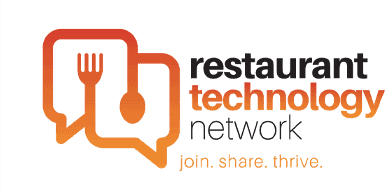Like hundreds of industries across the world, the food and beverage business has been devastated by the COVID-19 pandemic. One chef told Time magazine in April that he estimated 75% of independent restaurants would not make it.
The official figure remains to be seen as the world awaits a cure, but in the meantime, the restaurants still operating are doing everything they can to adjust. That’s meant everything from shifting on-premise dining to patio only, limiting menus, providing curbside pickup, offering to-go cocktails, requiring masks, and creating COVID promotions. And each month restaurants owners learn a little bit more about the evolving state of customers’ behaviors.
Nowhere have restaurants had to make more changes than to their payment processes. With social distancing highly encouraged by the Centers for Disease Control and Prevention, restaurants have shifted to contactless payment solutions to increase health and safety measures.
What does that mean? It’s more than just put up plexiglass to keep cashiers and customers physically separated. To really avoid undue contact, restaurant owners are turning to digital solutions that make mobile phones the risk-reducing middleman. Here, we’ll look at four contactless payment solutions for contactless restaurants and how they can be implemented quickly and efficiently.
Text to Pay
Text to pay is a concept whereby a restaurant provides a customer with an SMS link that they can then click on and complete their payment. The beauty of text to pay is it doesn’t require that customers download or use an existing app. Instead, the link takes them right to the point of sale platform for them to complete the transaction via credit card or digital wallet platform from their mobile device.
OneDine, a contactless ordering and payment solutions company, delivers contactless payment options via their Pure Pay platform. As illustrated above, a team member sends an SMS to a customer’s phone which prompts them to pay. No money, pens, or credit cards exchange hands, limiting contact and keeping germ transmission to a minimum.
Scan to Pay
Scan to pay is a technology that was developed to facilitate digital payments. Essentially a customer scans something, most often a QR code, to complete their payment. All that’s needed is for a restaurant to create and make available QR codes for customers to use. And the best part is, the QR code can be put on anything — a receipt, a drink, a sticker, or even a wall.
Table Sensor
Table sensors replace QR codes but operate the same way, allowing tap and pay activities using a mobile phone. OneDine’s program integrates into a restaurant’s existing POS system, allowing them to be up and running within 72 hours so they can start processing payments from the guest’s mobile device immediately.
Better yet, using a table sensor and their phone guests can easily:
- split the check
- pay per item
- pay in full
- add a tip
This also ensures that there’s no waiting around for a check, allowing customers to dine on their own time.
Online Order
Curbside pickup is becoming a standard option for all kinds of restaurants looking to avoid contact and serve a dine-out wary public. But taking orders over the phone can be time consuming, as well as result in missed opportunities if you don’t have the staff to handle the call volume.
Instead, many restaurants are turning to online ordering. This allows a guest to browse a menu from their mobile device, make a touchless order via their phone, then process their payment online before picking up their order.
Brands that adopt these solutions will be better positioned for the future, whether or not that future includes social distancing. By offering convenience, and reassuring customers that their health and safety are paramount, restaurants can encourage loyalty and set themselves up for a swift recovery tomorrow. But that starts with investing in smart solutions that ease the trauma of this global pandemic.
In addition to health and safety measures, cleaning protocols, HR changes, and staffing updates, restaurants need to think about how technology choices can improve their business as states begin to ease lockdown restrictions. Putting in place systems that minimize contact may become a requirement in the future should customers’ behavior change so much that it’s no longer considered optional. Moving to contactless payments now will help restaurants get ahead of such a shift, and set them apart from their competition.
To learn more about OneDine’s contactless options, visit onedine.com.





